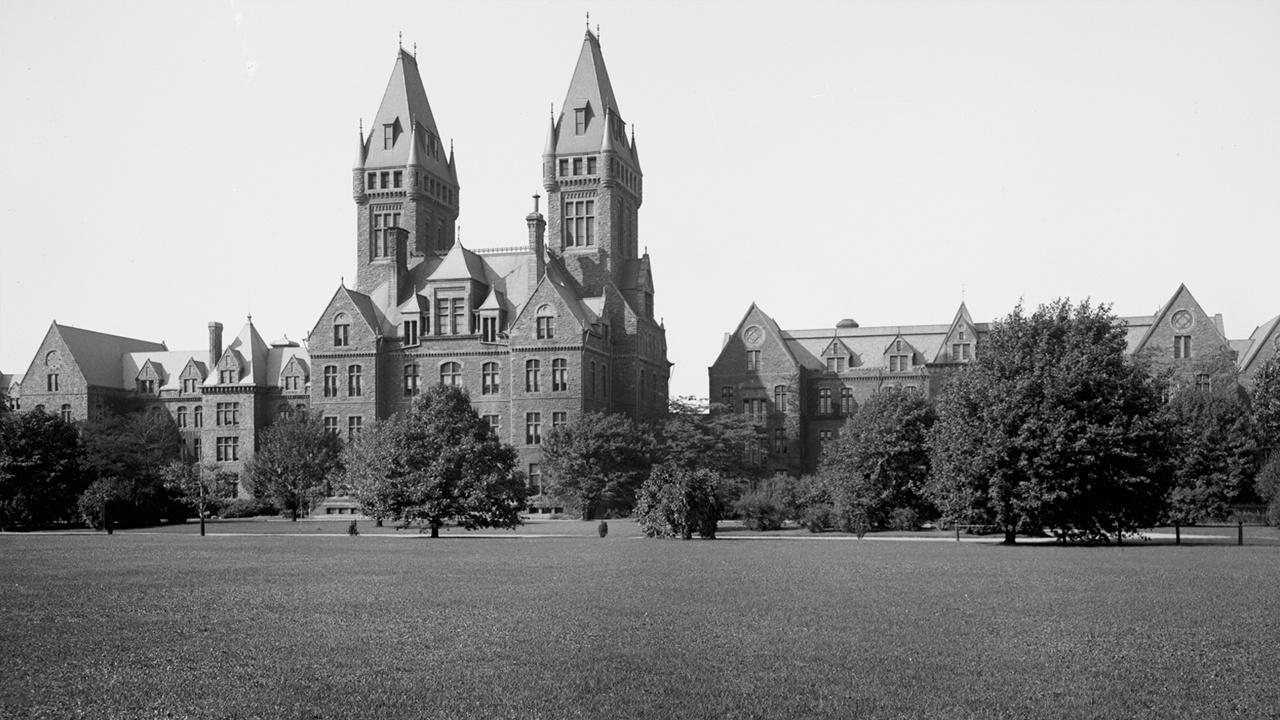
Mapping the Asylum
Grades 7 & 8
2 Class Periods
In this lesson students will create a map to identify both human and natural factors that impacted Buffalo and led to the creation of the Buffalo State Hospital.
Program Segments
Understand Buffalo’s architectural legacy and history from the 1800s through the 1950s.
The history and origin of the Richardson Olmsted Campus as the Buffalo State Asylum.
Discover Dr. Thomas Story Kirkbride’s contribution to the Richardson Olmsted Campus.
Objectives
Students will be able to:
- Identify factors that impacted Buffalo and led to the creation of the Buffalo State Hospital, such as the Civil War and distance to the nearest asylum.
- Recognize how the Erie Canal and availability of Medina Sandstone influenced the city of Buffalo and the asylum.
- Create a map of locations that had an impact on the building of Buffalo State Hospital.
- Describe the connections, and benefits, of locations on the map.
Instructional Resources
- videos or DVD
- Paper
- Pen/Pencil
- Markers
- Maps of Buffalo and New York State for reference (internet connectivity if accessing maps online)
- Map template
- T-Chart
- Reimagining a Buffalo Landmark
Procedures
CLASS PERIOD 1
- Prior to viewing the Reimagining a Buffalo Landmark segments, the teacher will ask these Focus Questions:
- What human activities and human-made features impacted Buffalo in the 1800s?
- What natural events or physical features impacted Buffalo in the 1800s?
- Students will watch the Reimagining a Buffalo Landmark segments and take notes. The T-Chart should be used for sorting human factors from natural factors.
- After watching the video segments, the teacher will ask the same Focus Questions:
- What human activities and human-made features impacted Buffalo in the 1800s?
- What natural events or physical features impacted Buffalo in the 1800s?
- The teacher should be sure that some of these topics/locations are discussed:
- Location of Buffalo and the Erie Canal
- The 200 mile distance between Buffalo and the nearest asylum (It was the New York State Lunatic Asylum at Utica - in Utica, New York)
- The availability of Medina Sandstone
- Olmsted parks and parkways
- Buffalo State College
- Scajaquada Creek
- Forest Lawn Cemetery
- Niagara River
- Students will be partnered and given the following task:
- Now you know there are so many factors that led to the building of the asylum and influenced the city of Buffalo. You and your partner are going to create a map that will showcase all of these factors. You should be able to explain your map and how it shows the factors we discussed surrounding what we know today as the Richardson Olmsted Campus. Also be prepared to share how Buffalo, New York’s geographic location impacted the building of the Buffalo State Hospital.
- Students will begin their maps, if time allows.
CLASS PERIOD 2
- Students will use the class period to finish their maps.
- The teacher will visit the student pairs to support, observe and evaluate understanding.
- Students will write a paragraph, or two, outlining the
- factors that led to the building of the Buffalo State Hospital
- connections, and benefits, of locations on the map
Adaptations (grade 9-12)
- Students could debate which had a greater influence: people or environment. Could the asylum have been created and impacted Buffalo as significantly without the civil war, Richardson, Olmsted or Kirkbride? What if there was no Erie Canal or Medina Sandstone?
- Students could also create a map that theorizes what Buffalo would be like if these factors had not been present to create the asylum. They should use their understanding of the impact of the asylum to visually display what the lack of this historical landmark would have led to.
Assessment Task
- T-Chart - Students will complete a T-Chart of human activities and physical elements of the region that had an impact on building the asylum in Buffalo, New York.
- Students will complete a map of those features and write 1-2 paragraphs about the factors that led to the building of the Buffalo State Hospital including connections, and benefits, of locations on the map.
Extension Activities (optional)
- Students can create a comic strip or graphic novel about the creation of the asylum, depicting the relationship between the physical environment and human activities involved.
New York State Learning Standards
Learning Standards for Social Studies (Intermediate)
Standard 1: History of the United States and New York – 2, 3, 4
Common Core Learning Standards for English Language Arts & Literacy (grades 6-12)
Speaking and Listening Standards – 1, 2, 3, 4, 5, 6
Language Standards – 1, 2, 3, 4
Reading Standards for Literacy in History/Social Studies – 7
Writing Standards for Literacy in History/Social Studies – 1, 4
Learning Standards for the Arts – Visual Arts (grades 7 & 8)
Creating – Anchor Standards 1, 2, 3
Learning Standards for Health, Physical Education, and Family and Consumer Sciences (Intermediate)
Standard 2: A Safe and Healthy Environment – Health Education - 1


Reimagining a Buffalo Landmark is funded by the Peter C. Cornell Trust, The Zemsky Family and the Members of Buffalo Toronto Public Media.